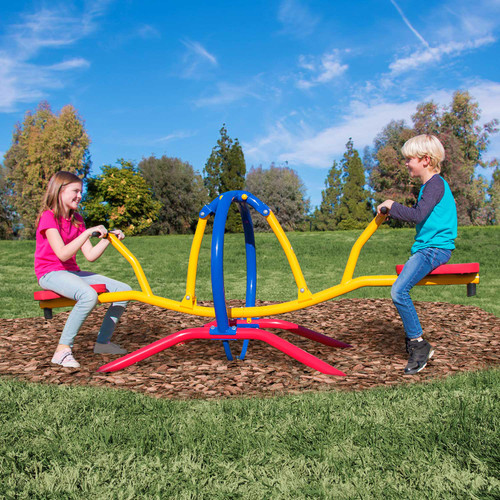
When we think of playgrounds, our minds often drift to memories of swings, slides, and carefree laughter. While these features are integral to the playground experience, the true value of playgrounds extends far beyond mere fun and games. Playgrounds are vital spaces for child development, fostering physical, social, emotional, and cognitive growth. Here’s a closer look at why playgrounds are so crucial for children’s development.
1. Physical Development
Playgrounds are designed to encourage a variety of physical activities that promote motor skills, strength, and overall fitness. Climbing structures enhance upper body strength and coordination, while slides and swings develop balance and spatial awareness. Regular physical activity helps children maintain a healthy weight, build strong bones and muscles, and develop endurance. Playgrounds provide an engaging environment where kids can naturally engage in exercise, setting the foundation for lifelong healthy habits.
2. Social Skills and Teamwork
Playgrounds are social hubs where children learn to interact with their peers. Through cooperative play, children develop essential social skills such as sharing, taking turns, and resolving conflicts. These interactions teach kids how to communicate effectively, empathize with others, and work as part of a team. Playgrounds offer a microcosm of society where children can practice and refine their social skills in a supportive and dynamic environment.
3. Emotional Resilience
Playgrounds provide opportunities for children to face and overcome challenges, helping to build emotional resilience. Whether it’s climbing to the top of a structure or navigating a tricky balance beam, these experiences teach children to manage fear, take risks, and build confidence in their abilities. Additionally, the joy and exhilaration of play release endorphins, which contribute to overall emotional well-being.
4. Cognitive Development
Playgrounds are rich with opportunities for cognitive growth. Problem-solving is a key component of many playground activities, such as figuring out the best way to navigate an obstacle course or how to build a sandcastle. Playgrounds also stimulate imaginative play, which fosters creativity and critical thinking. As children invent games and scenarios, they practice decision-making and explore cause-and-effect relationships, enhancing their cognitive abilities.
5. Sensory Stimulation
Playgrounds provide a multisensory environment where children can engage their senses. From the tactile experience of sand and water play to the visual stimulation of colorful equipment, these sensory inputs are crucial for brain development. Sensory play helps children process and respond to sensory information, aiding in the development of fine and gross motor skills and improving concentration and focus.
6. Inclusivity and Accessibility
Modern playgrounds are increasingly designed to be inclusive, catering to children of all abilities. Accessible equipment ensures that children with disabilities can participate in play alongside their peers, promoting inclusivity and diversity. Inclusive playgrounds teach children the importance of empathy, acceptance, and respect for differences, fostering a more inclusive society from a young age.
7. Connection with Nature
Many playgrounds incorporate natural elements such as trees, rocks, and water features, providing children with a connection to nature. Nature-based play has been shown to reduce stress, improve mood, and enhance cognitive function. Exposure to nature encourages children to appreciate the environment and develop a sense of stewardship for the natural world.
8. Parental and Community Engagement
Playgrounds are not just beneficial for children; they also serve as community gathering spaces where parents and caregivers can connect. These interactions strengthen community bonds and provide opportunities for parents to share experiences, advice, and support. A vibrant playground is often a sign of a healthy, connected community.
Conclusion
Playgrounds are far more than places for children to expend energy; they are essential spaces for comprehensive development. By providing opportunities for physical activity, social interaction, emotional growth, cognitive challenges, sensory stimulation, and inclusivity, playgrounds play a critical role in shaping well-rounded, healthy children. As we continue to design and build playgrounds, it’s vital to recognize and support their multifaceted contributions to child development. So, next time you see a playground, remember: it’s more than just swings and slides—it’s a foundation for the future.